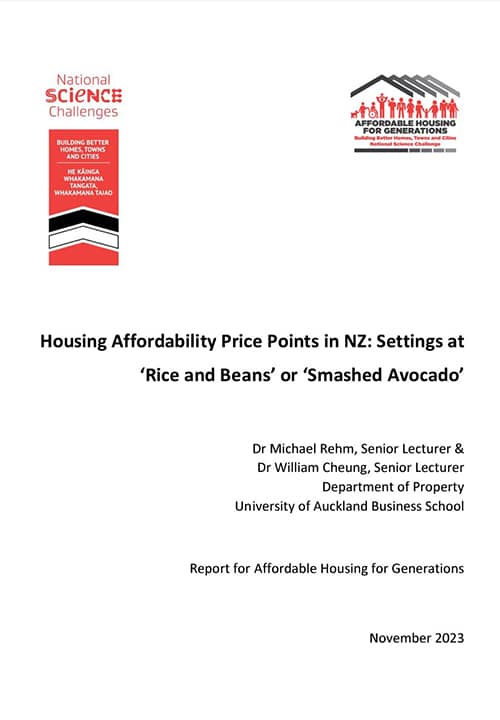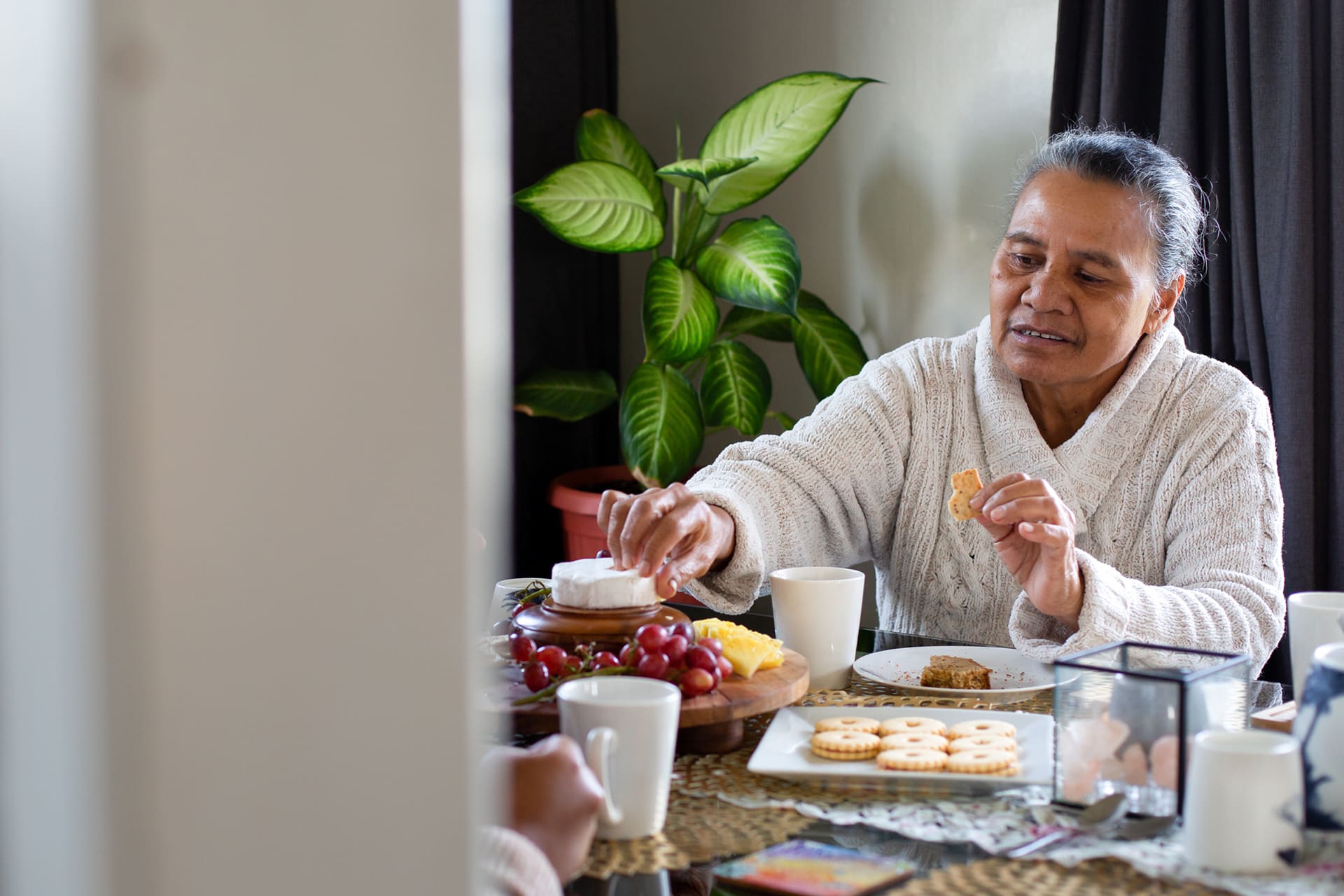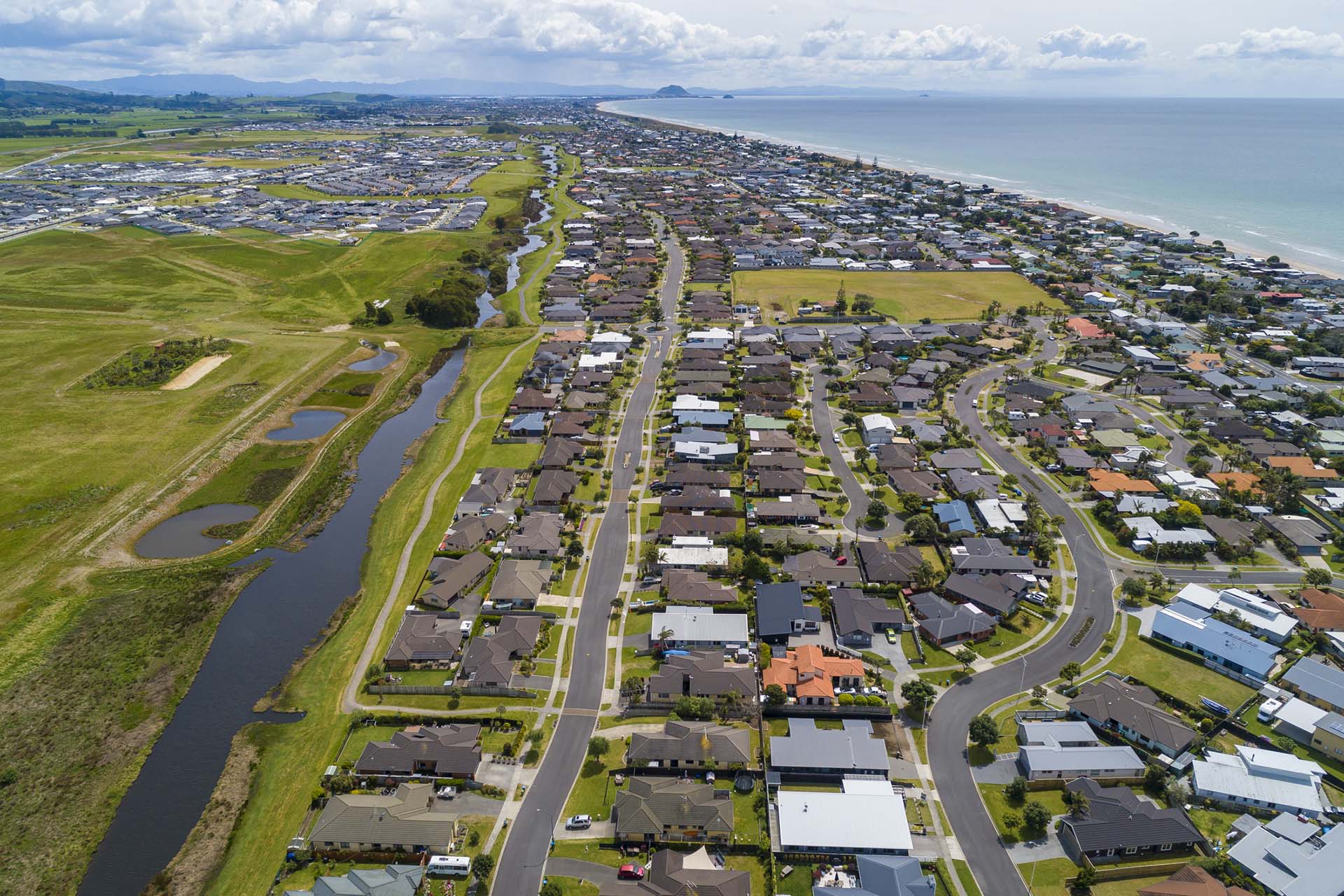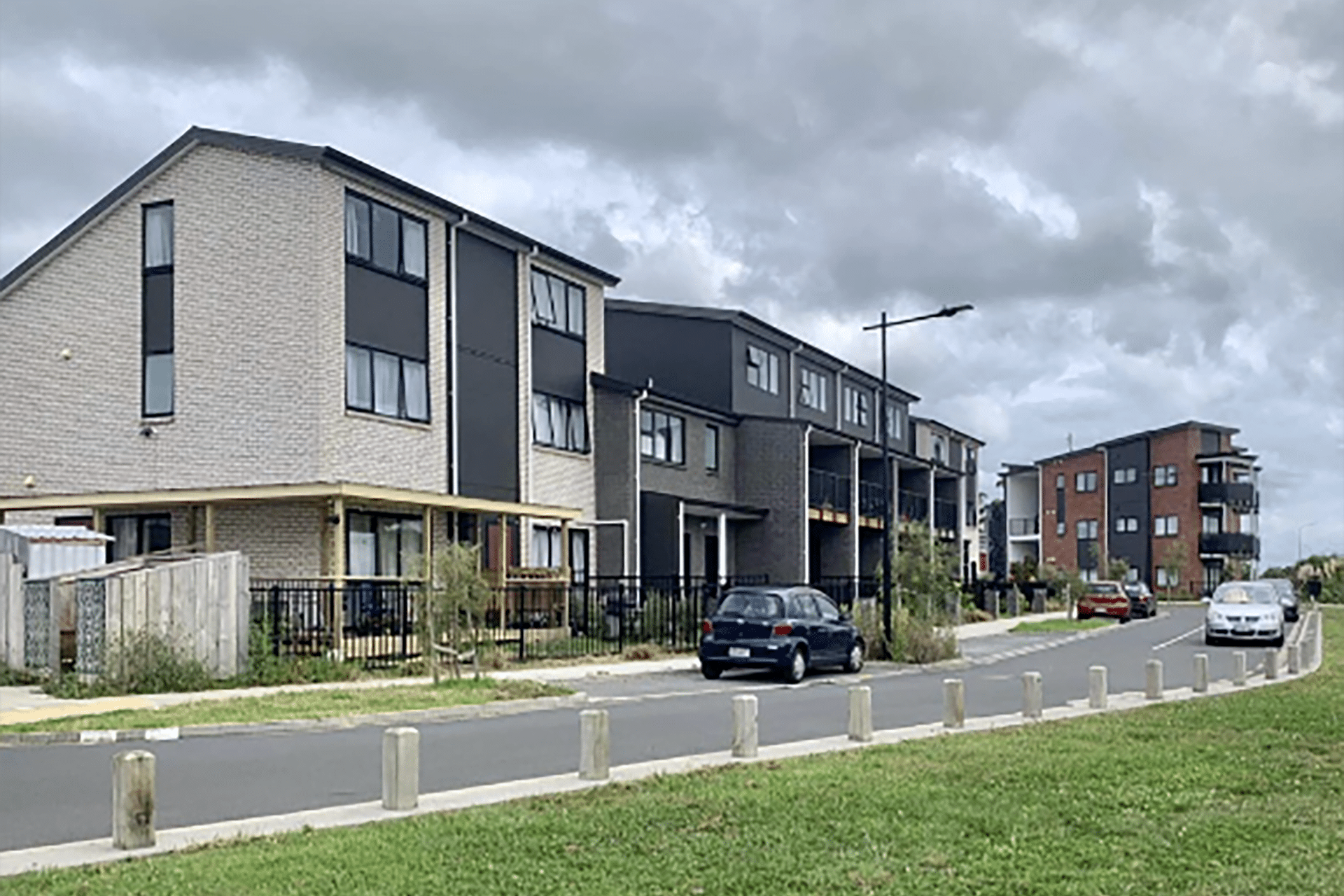
Michael Rehm and William Cheung
20/11/2023
Read Publication
Housing Affordability Price Points in NZ: ‘Rice and Beans’ vs ‘Smashed Avocado’ Novel approach to affordability focusing on wellbeing and the economy
This paper proposes a novel approach using a variation of the traditional residual income model to redefine housing unaffordability thresholds. Unlike the conventional approach, where households are assumed to survive on minimal expenses (‘rice and beans lifestyle’), we prioritise the wellbeing of household members and the general economy. Our affordable price point model stresses the importance of families living beyond sustenance and avoiding enslavement to housing expenses.
Our modelling centres on households’ financial capacity, including bank lending, rather than anchoring on market-derived home purchase prices and rents. Our findings accentuate the gap between market prices and what typical households can genuinely afford without compromising non-housing expenses. We illustrate New Zealand’s housing unaffordability predicament through case studies of Horowhenua District and Auckland. In both markets households with substantial incomes have few suitable housing options that permit them to match the benchmark cohort’s non-housing spending patterns. In Auckland, even first-time owner occupiers with $200k incomes face trade-offs that previously generations of similar means did not encounter.

















